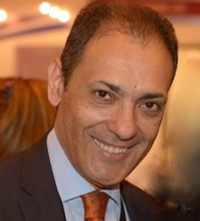 |
||
Hesham has been a Consultant Rhinologist/Facial Plastic Surgeon at Charing Cross and Royal Brompton Hospitals in London since 2001. He is also an Honorary Senior Lecturer of ENT at the Imperial College London. He trained at Ninewells Hospital in Dundee, The Royal National Throat, Nose and Ear Hospital and Charing Cross Hospital in London. He became a Fellow of the European Academy of Facial Plastic Surgery at Amsterdam Medical Centre, the Netherlands in 2000. In his practice he operates exclusively on the nose and sinuses with a particularly large number of complex and tertiary referral cases.
Hesham is the President of the section of Laryngology & Rhinology in the Royal Society of Medicine. He is also a member of the council of FPS-UK and BRS, and Chairman of Editorial Board of the Journal of ENT Masterclass. He has published several peer-reviewed articles and book chapters on rhinology and rhinoplasty and is a regularly invited speaker worldwide.
Changes in Contemporary Sinus Surgery During the last two decades of the 20th century the management of sinus disease saw a tremendous change. This was mainly due to the work of Messerklinger, who revolutionised the understanding of mucociliary clearance and opened the road to new concepts in management of sinus disease. The invention of the endoscope was an essential factor in pushing this forward and Endoscopic Sinus Surgery was born. From then onward, management of sinus disease and sinus surgery techniques continued in their evolution. In this presentation I will describe contemporary management of sinus disease, both medical and surgical. I will cover recent changes in medical management highlighting currently available data. I will also review new surgical concepts and tools such as osmotic sinus dilatation amongst others.
Why I Became a Rhinologist Why I became and ENT Surgeon and why a Rhinologist? In this presentation I will go through my career progression from deciding to do ENT to subspecialisation in rhinology. There are certainly many positives but there are “maybe” some negatives. I will hopefully incite younger generations to (or not to!) pursue a similar career.
Rhinoplasty - A Personal View Rhinoplasty is considered the most difficult operation in plastic surgery. John Orlando Roe from Rochester, New York is credited with the first description of closed or endonasal rhinoplasty in 1887. Following from Rethi’s first description of a high columellar incision in 1921, Goodman and Charles popularized open rhinoplasty in the 1970s with the transcolumellar incision that offered unparalleled exposure. Many surgeons replaced the endonasal approach with the open approach particularly for work on the nasal tip. Over the recent years, there has been a revival of the endonasal approach with the amalgamation of techniques that have been developed for the open approach. I have always used both approaches depending on the deformity encountered and feel that rhinoplasty surgeons should be familiar with both. I will present my personal 15 years experience utilising both approaches in an average of 200 rhinoplasties per year.
|
